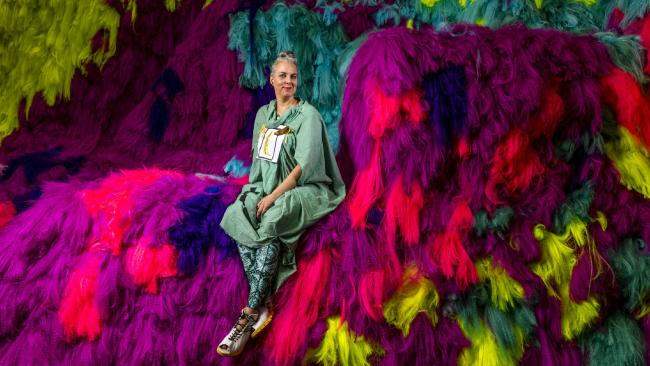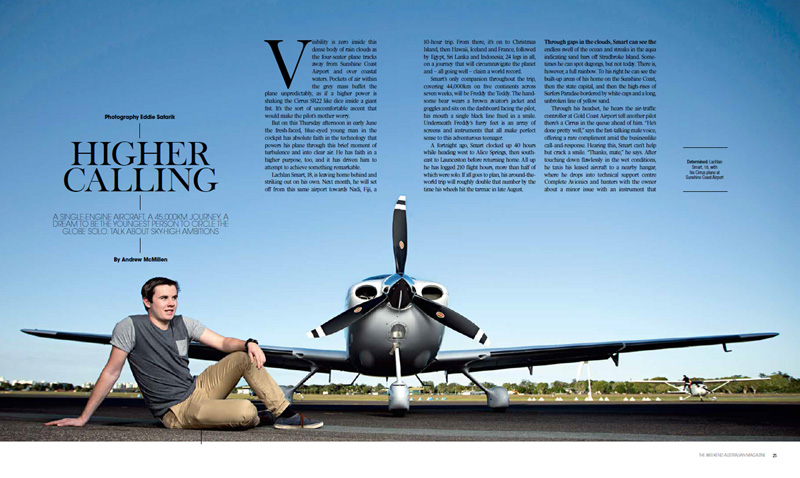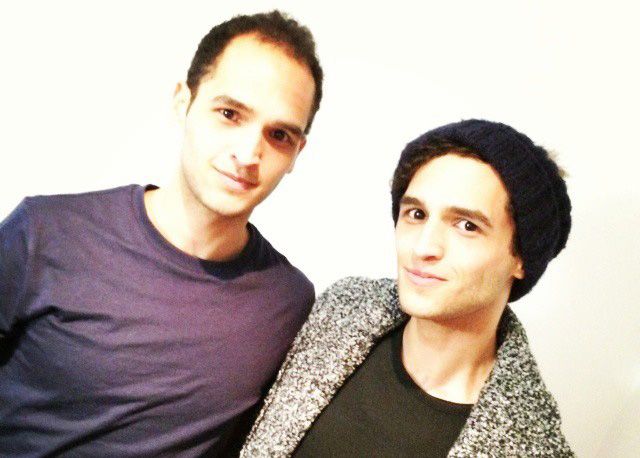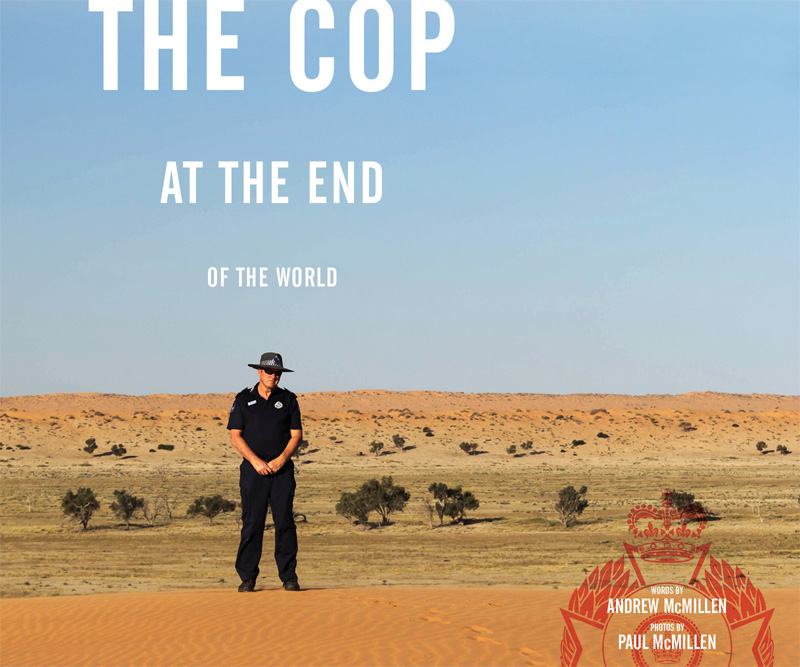Freedom Thinkers
In their underground “carparktopia”, the women of Brisbane Free University dispense knowledge to anyone within earshot.

by Andrew McMillen / Photograph by Russell Shakespeare
++
About once a month, beneath a bank on Boundary Street in Brisbane’s inner-south West End, an enterprising trio of young women direct their energies toward setting up a classroom unlike any other you’ll find in the city. Under harsh fluorescent lights and between 13 Westpac customer car parks, dozens of plastic chairs are sat facing a white banner taped to the brick wall, covering the bank’s logo. A second banner is hung above the entrance, so that curious passersby might be drawn in by the impromptu gathering of education-minded locals.
Since November 2012, a motley crew of passionate, engaged learners has been flocking to this initiative, dubbed Brisbane Free University. Pictured on the banner beside the name is the unmistakable image of an ibis taking flight, its wings outstretched. This bird was chosen for its antagonistic scavenger spirit, and illustrated by 26-year-old co-founder Anna Carlson. It wasn’t until much later that a happy accident was uncovered: the Egyptian god of knowledge, Thoth, was often depicted as a man with the head of an ibis. There’s a curious duality at play here, then: the inner city-dwelling ibis takes what it can from its surrounding environment to survive, while the women of Brisbane Free University enjoy nothing more than to share knowledge with whoever happens to be in earshot, free of charge, to enlighten the lives of those around them.
Carlson and her two co-founders – Fern Thompsett, 28, and Briohny Walker, 30 – do not take an adversarial approach to the city’s existing tertiary education institutions. To do so would be a touch hypocritical, as the trio met while studying arts/law, anthropology and philosophy, respectively, at the University of Queensland, and a review of BFU’s past sessions show a strong presence of UQ, Queensland University of Technology and Griffith alumni. By 6.30pm on this particular Thursday, Walker steps forward and speaks into a microphone connected to a solar-powered PA system whose two speakers are positioned atop wheelie bins.
“Thank you for coming down to carparktopia for BFU. It’s lovely to see you all,” she says, beaming. “Tonight is particularly special because it’s a meta-BFU: tonight at free university, we’re going to be talking about free universities. The acoustics here are a little bit weird, so can I check that everyone at the back can hear me?” After getting the thumbs-up from those in the back rows, she hands over the mic.
Facing the audience are two chairs; one for Thompsett and one for the American guest speaker, Laura Nelson, a 26 year-old student of Harvard University who is studying a PhD on the history of free universities. Both are casually dressed and clearly comfortable with fronting this crowd of around 30 attendees, whose average age appears to be about 22. After acknowledging the traditional owners of the land on which we sit, Thompsett gives a brief overview of how the event came to be.
“When Briohny, Anna and myself co-founded BFU, we didn’t realise that there were any other free universities in operation, even at this point in time, let alone in history – which is probably really politically naive of us,” she says with a smile. “It was just an idea that came out of the blue, and a bottle of wine, and then it took form in this very carpark approximately three years ago. It was only a couple of months into the project that we realised that what we’d tapped into was a global movement that stretched back in time, and right around the world.”
Last year, Thompsett spent five months travelling throughout the U.S., Canada and Mexico, visiting free universities and studying the interrelated concept of radical education.
While spending time in Australia, Nelson has been researching this country’s founding movements. She reads aloud a quote to begin: “Training for the economy is the de facto centre of the university’s operations. Students flow in from the public examinations and flow out clutching tickets to membership in the occupational elite. Through the university, a semi-closed upper status perpetuates itself from one generation to the next, preserving the lines of privilege which universal secondary education was thought to destroy. Because their attention is on getting good jobs, the mass of students are insulated from the academic culture of the university and from the radical traditions of student life and thought.”
As Nelson explains, this quote was first published in a Sydney University student newspaper in October 1967 and became the foundation manifesto of what became known as the Free U, which ran out of a rented house in Redfern and reached a peak of 300 students within two years. The Sydney experiment inspired similar movements in Brisbane, Melbourne and Adelaide, among others. As Nelson speaks, buses noisily accelerate out on the street, while occasional hecklers direct their voice toward the carpark, an action which is met with smiles by the organisers. The whole point of using this space is that there is no door between the public and private; instead, anyone interested may walk down and take a seat. That doesn’t happen tonight, perhaps because the audience is among the smallest in recent memory – possible a reflection of the meta theme – but previous discussions on sex and consent, the future of West End and women in media have each attracted healthy crowds.
After chatting amicably for an hour, Thompsett opens the discussion up to questions and comments from the floor. A young guy in a suit and a flat cap raises his hand; he drones into the microphone for minutes on end about several tangentially-related concepts before attempting to form a question for the two women. I find myself quickly frustrated by his presence, and reflect on how this behaviour would not be tolerated in a mainstream university classroom; he would soon be drowned out by groans, and the lecturer, sensing the restlessness, would likely intervene. Here at BFU, he is indulged with silent patience by all in attendance, though a couple of young women in front of me start rolling their eyes at one another and quietly giggling to themselves.
This young man is passed the microphone several more times during the group discussion. His barely coherent monologues fill the space, and each time Thompsett skilfully acknowledges his contribution before steering the conversation toward more productive pathways. I realise my frustration toward him is rooted in my own studies at UQ several years ago. I rarely enjoyed the Bachelor of Communication program, doing the bare minimum to scrape through with a pass while pouring my time into socialising and extracurricular activities. This is a fault of mine, not the university’s, yet even here, I found myself thinking in terms of exams and assessment criteria.
Thoughts such as these are in direct opposition to what BFU represents: learning for learning’s sake, rather than simply chasing a piece of paper, an admirable grade point average or a high-paying job. It’s a beautiful, freeing approach to education, as it opens up avenues beyond the traditional classroom model. It rejects the notion that learning ends with high school, or university. Instead, it’s a lifelong process, and movements such as this acknowledge the universal human hunger for knowledge, discussion and understanding.
An informal “tutorial” is scheduled to take place in the beer garden of the nearby Boundary Hotel once the organisers have reset the carpark and packed up the PA, but for now, says Thompsett, “I don’t have any conclusions, I just have more questions, which I think is probably the sign of a sound research project – at least for within this framework of anarchist learning spaces.”
As the audience filters out onto Boundary St after helping to stack chairs, minds and mouths alive with inspiration, it’s clear that this has been another successful chapter not only for BFU’s three founders, but for a radical educational concept that first took root almost 50 years ago.
brisbanefreeuniversity.org








